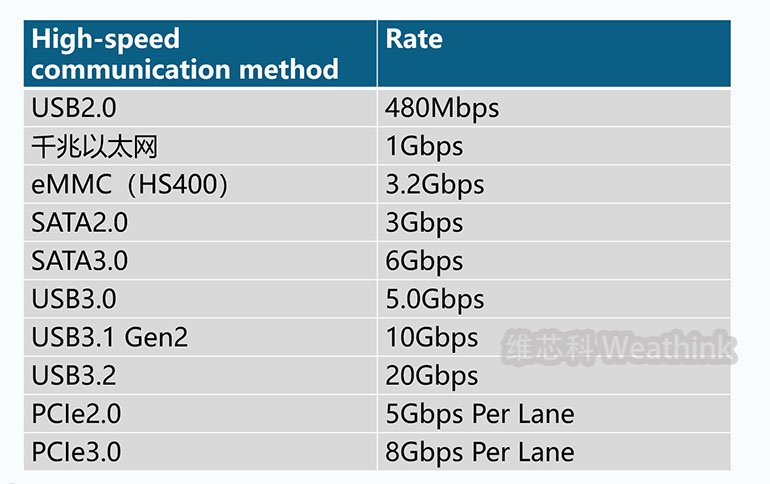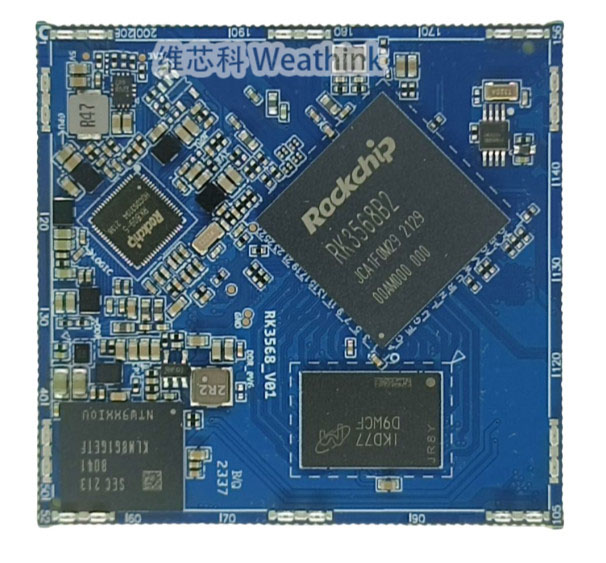About USB 3.0 and PCIe Rates for the RK3568 SOM
1. Overview of USB 3.0
1.1 Speed
USB 3.0, also known as SuperSpeed USB, supports data transfer rates of up to 5 Gbps. This speed represents a significant improvement over its predecessor, USB 2.0 (which has a maximum speed of 480 Mbps), making data transfer more efficient. USB 3.0 is also backward compatible with USB 2.0, allowing users to enjoy faster transfer speeds without needing to replace their devices.
1.2 Working Principle
USB 3.0 introduces the capability for bidirectional data transfer, allowing simultaneous data sending and receiving. This feature makes USB 3.0 more efficient than USB 2.0 when transferring large amounts of data. Additionally, USB 3.0 uses advanced signal encoding techniques to reduce error rates during transmission, further enhancing data transfer stability.
1.3 Application Scenarios
USB 3.0 is widely used in external storage devices (such as portable hard drives and flash drives), printers, scanners, and various peripheral devices. As data volumes increase, USB 3.0 has become the standard interface for connecting modern devices.
2. Overview of PCI Express
2.1 Speed
PCI Express (PCIe) is a high-speed serial expansion bus standard primarily used for connecting devices within a computer. The speed of PCIe depends on its version and the number of lanes. For example:
PCIe 1.0: 2.5 Gbps per lane
PCIe 2.0: 5 Gbps per lane
PCIe 3.0: 8 Gbps per lane
PCIe 4.0: 16 Gbps per lane
PCIe 5.0: 32 Gbps per lane
PCIe typically has configurations of 1, 4, 8, and 16 lanes, allowing for a substantial increase in total bandwidth. For instance, PCIe 3.0 x16 can achieve a total bandwidth of 128 Gbps.
2.2 Working Principle
PCIe uses a point-to-point connection method, meaning each device has its own dedicated lane. This architecture reduces latency and improves bandwidth utilization. PCIe also employs flow control and error detection mechanisms to ensure reliable and stable data transmission.
2.3 Application Scenarios
PCIe is commonly used for high-performance devices such as graphics cards, SSDs, network adapters, and other expansion cards. Due to its high bandwidth and low latency characteristics, PCIe plays a crucial role in gaming, data centers, and high-performance computing.
3. Comparison of USB 3.0 and PCIe
3.1 Speed Comparison
USB 3.0: Maximum speed of 5 Gbps (theoretical value), typically slightly lower in practical applications.PCIe: Depending on the version and lane configuration, speeds can range from 2.5 Gbps to 32 Gbps or more, with actual bandwidth usually close to theoretical values.
3.2 Application Differences
USB 3.0: Primarily used for connecting external devices, focusing on usability and compatibility.PCIe: Mainly used for connecting internal devices, emphasizing performance and bandwidth, suitable for speed-critical applications.
4. Summary of Rates
USB 3.0 and PCIe each have unique advantages and application scenarios. USB 3.0 provides convenient external device connections, while PCIe demonstrates excellent performance for internal device connections. Understanding the rates and working principles of these two interfaces helps developers and users choose suitable devices and connection methods based on specific needs. With technological advancements, more efficient interface standards may emerge in the future, further enhancing data transfer speed and efficiency.

5. RK3568 SOM
The RK3568 is a new generation processor launched by Rockchip, supporting USB 3.0 and PCIe 2.0/3.0 interfaces, capable of meeting various high-speed connection scenarios.
The RK3568 SOM is an embedded core board developed by Weathink Technology, utilizing the Rockchip RK3568 series. As a professional SOM manufacturer, Hangzhou Weathink Technology Co., Ltd. offers devices based on the ARM Cortex-A55 core, featuring high performance, low power consumption, multiple interfaces, and low cost. It also provides 3D graphics acceleration and integration of key peripherals to meet diverse application needs, supporting mainstream DDR4/LPDDR4 memory and offering dual Gigabit Ethernet and multiple serial ports to satisfy industrial product demands.







